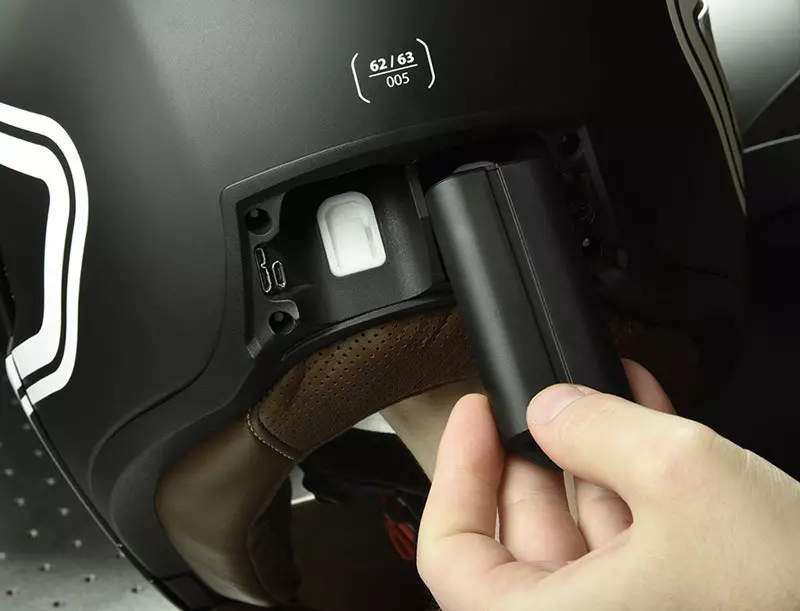The Digilens reference HUD design is a fully integrated display element and computer system with wireless networking, accelerometers and sensors working together to optimize the motorcycle riding experience. It will provide a completely immersive, mixed reality experience using augmented reality (AR) to layer vital information with an enhanced field of vision without disrupting concentration on the road.
Rapitypes provided the prototyping support to Renfrew Group International (RGI) in their commission to package a HUD system into a motorcycle helmet and then provide test units and a dozen wearable systems for the CES (Consumer Electronics Show) in January last year.
The HMD design comprises three components: A single board computer and battery power source, a pico projector image generation module, and a holographic waveguide display set within the rider’s field of view.
The image generation module, which was packaged into a compact space inside the helmet, integrates a micro-display panel, light source and all the optics needed to illuminate the display panel, separate the reflected light, and collimate it into the required Field of View.
The HUD is made possible through the application of an optical innovation built around Digilens’ core holographic nano-material. This display technology which is affordable enough for enterprise applications like motorcycle helmets will deliver a comfortable blend of computer generated and real world imagery in a transparent lightweight form factor.
By enabling an expanded field of view, long range focus point and intelligent rider cues, the new solution delivers an industry breakthrough for motorcycle HUDs, similar to that achieved recently with Digilens’ compact aerospace HUD.
The benefits of the new Digilens HUD technology.
Features such as GPS mapping, localized speed, traffic warnings, phone communications, engine management, fuel/trip/turn indicators, rear and front recording action camera views, and more, can all be crisply displayed front-and-centre through the wave guide display. Night and fog radar systems can also be built into the system along with AR capabilities that might outline the road ahead along with overlays of local landmarks, restaurants, gas stations and theatres.
Voice commands let the rider decide how much or how little they will see on the screen. More importantly, safety measures can be built into the system to alert riders when they face any of the most common causes of motorcycle accidents, such as taking turns too sharply or failing to respond to a car turning in front of them or emerging from a side road.
DigiLens waveguide HUDs are designed to be both inexpensive and easy to use. The photos show how they literally clip into HUD-enabled helmets. If they get damaged or destroyed, they can simply be replaced by clipping on a new display.
Riders will most likely get two or three spare waveguides in a pack at purchase. The HUD easily accommodates all kinds of riders eyewear and is 94% transparent, so when switched off the HUD will not affect normal vision or the rider’s field of view. It can be left in full time or clipped in when needed.
Products using the new display technology are expected to be available for purchase by the end of the year.












